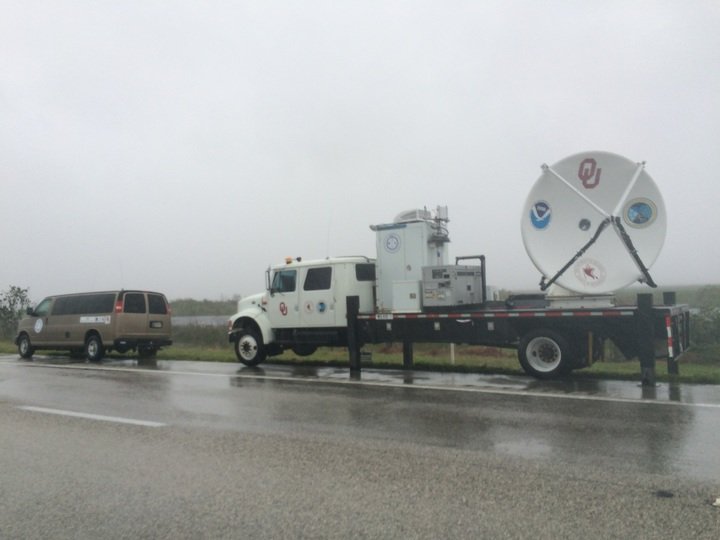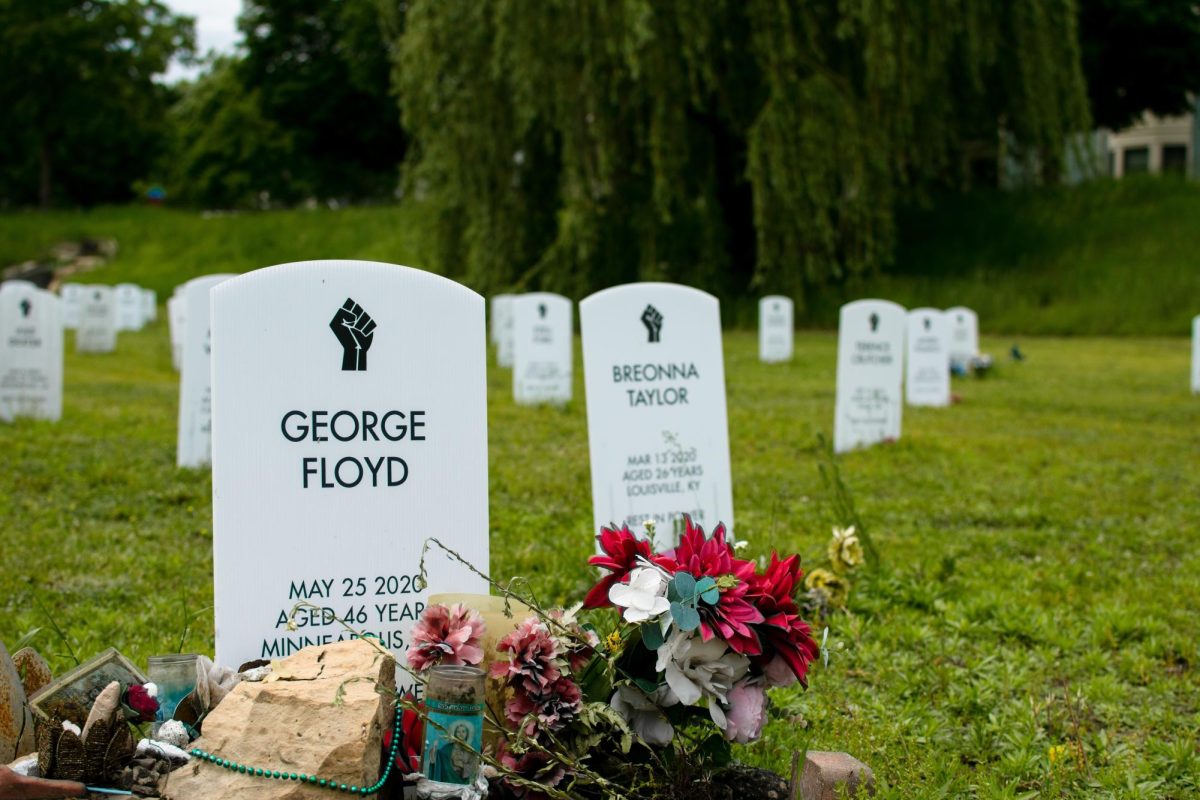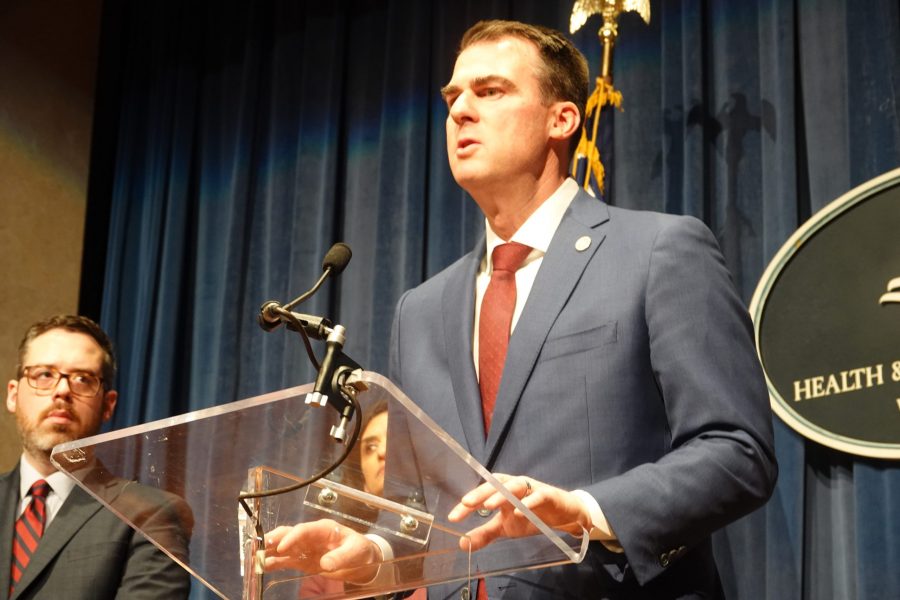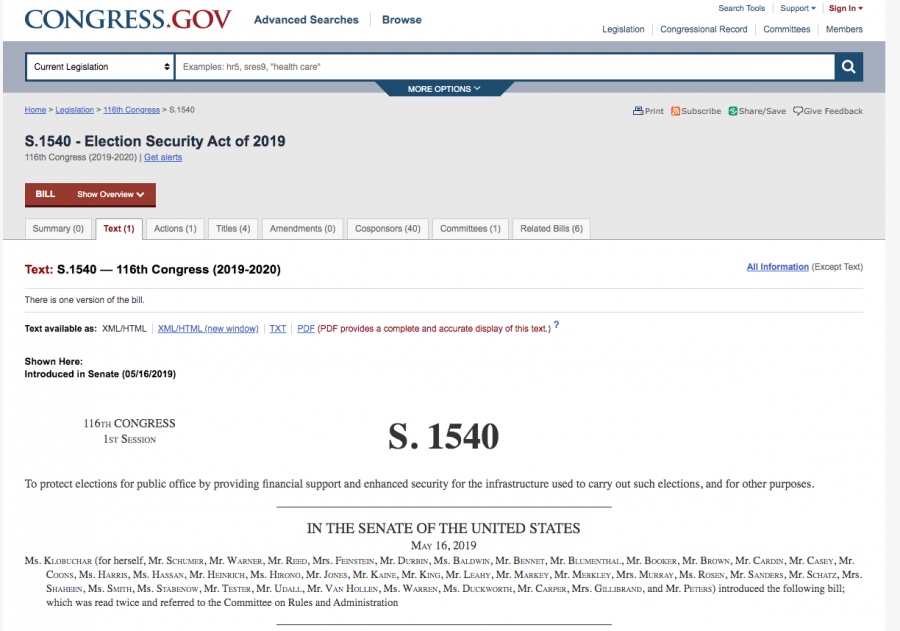A group of meteorologists, including three from OU, are searching for answers about future forecasts after collecting data from both Hurricane Harvey and Irma.
OU meteorology professor Mike Biggerstaff, led the research team consisting of OU Ph.D student Addison Alford, National Severe Storms Laboratory (NSSL) researcher Sean Waugh, Dr. Dan Dawson of Purdue University and OU research meteorologist Gordon Carrie. Over the past month the team has researched two major hurricanes, making the voyage to Houston, Texas and Fort Lauderdale, Florida.
Despite all being from different backgrounds, the group had the same goal of collecting as much data as possible.
“OU, NSSL and Purdue collaborated to build four probes, dubbed Portable Integrated Precipitation Stations, or PIPS, to measure the raindrop size distributions, as well as other standard variables,” Dawson said. “Our mission was to place these probes in the path of the hurricane so that they sampled various parts of the outer rain bands as the hurricane made landfall.”
The team hoped to collect enough information to help answer questions about not only hurricanes, but also the environment as a whole.
“There’s sort of this overall question what is the environment like in hurricanes as they make that transition to landfall, and that’s not something we understand pretty much at all,” Waugh said.
The group traveled with three vehicles, each one playing a different role in finding data. Making up the small fleet for the researchers was van full of computers for storing data, a Dodge truck with a weather mesonet rigged on the back and a six-wheel trailer truck that has a Shared Mobile Atmospheric and Teaching (SMART) radar attached to the back.
The severe weather and lack of resources during the hurricane, forcing the team to use the vehicles as shelters multiple nights.
“It’s just something that goes along with the territory of covering hurricanes,” Waugh said. “When it’s making landfall, basically wherever you’re at shuts down. People evacuate, power goes out, hotels are closed, gas stations are closed, restaurants are closed–there’s not a lot of infrastructure left because everybody leaves.”
In over 90 mph winds, the team camped out in their cars, examining the two hurricanes in a variety of ways. They went into the heart of Hurricane Irma, becoming one of the only teams ever to release a weather balloon from ground-level into the eye of a hurricane according to Alford. The balloon collected 3.25 inches of precipitation — an average day in Oklahoma doesn’t get an inch — a valuable piece of information.
The team has good reasons for going to these extremes for data. The purpose of the deployments is to gain information to better predict future storms, hopefully reducing the impact.
“It wasn’t particularly pleasant,” Dawson said. “But the fact that you are collecting valuable data and also experiencing one of the greatest spectacles nature has to offer more than offset the discomfort, at least for me.”
Alford, who has now covered four hurricanes, says it will all be worth it.
“These events are affecting people’s lives and anything that we can do to make a forecast better, it’s worth it,” Alford said.
After experiencing two hurricanes in full force, it sounds like the hard part is over for the researchers, but that’s not the case. They now begin the process of analyzing the data they retrieved, hoping to find answers to why these type events happen when and where they do.
“There’s a lot of research coordination that takes place immediately afterwards, and that’s really what we’re focused on,” Biggerstaff said.
This process could take years before any valuable answers are found, but the team believes it collected enough information to eventually find them, and doesn’t anticipate going after another hurricane anytime soon.
“It’s not just something you can do on a whim,” Waugh said. “Most the time hurricane deployments happen very rapidly like a day or two before. You’re kind of waiting to see where it’s going to go, and how strong it’s going to be. It’ll probably be a little while before we go to another one.”
For now, the team will sleep in their beds instead of their cars, waiting for the next hurricane to chase.
“It’s kind of a never-ending job, it’s something you have to stay on top of the whole time,” Waugh said. “Doing two back-to-back takes a toll on you. I think we all need some time to settle down and kind of look over what we have before we go out and do it again.”




